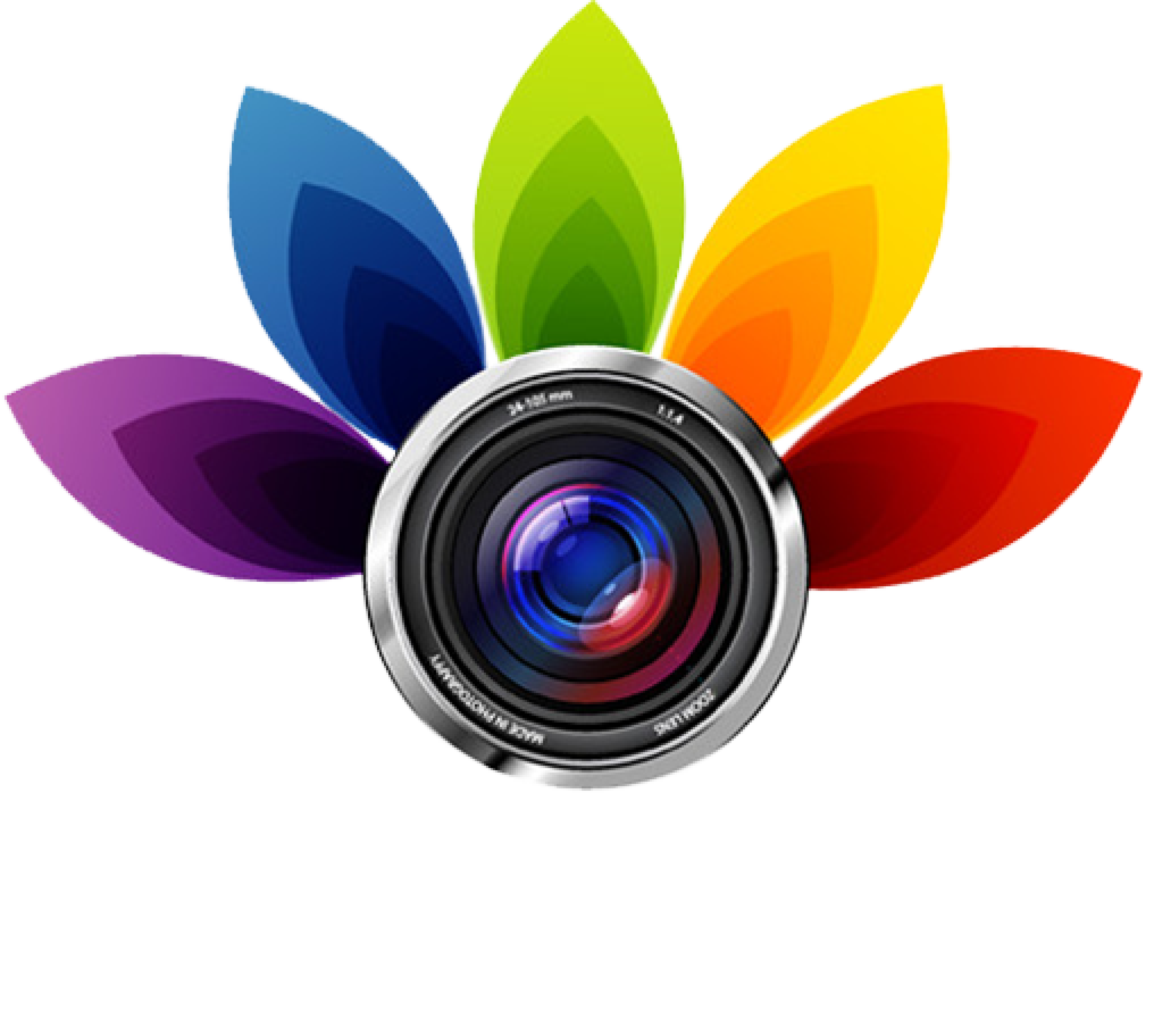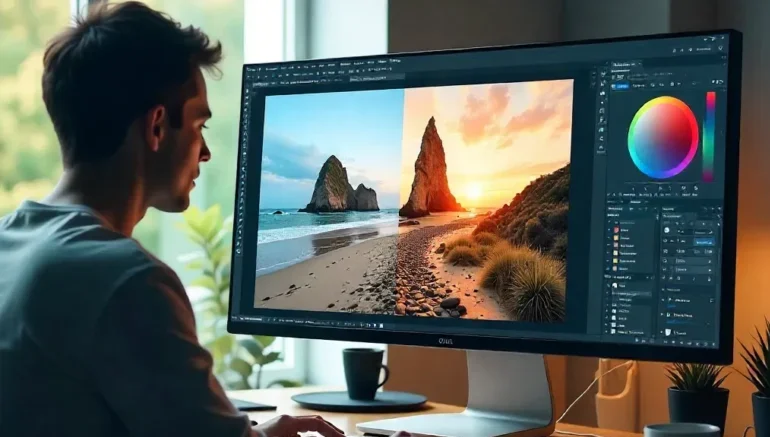
Top 10 AI Editing Barriers That Require Manual Photo Editing Skills
AI tools have made photo editing faster and easier, but they are not perfect. They can handle basic tasks like color correction, cropping, or removing small blemishes. Still, there are many situations where AI struggles to deliver the best results. Relying solely on AI can leave mistakes that affect the quality of your images. This is where strong photo editing skills come in, giving you control over every detail and making your photos look professional.
Manual editing is still an important part of high-quality photography. AI may miss fine details, misinterpret colors, or produce unnatural results. Learning when to rely on AI and when to use your skills is key to producing polished work. In this article, we will explore the top 10 AI limitations that require human intervention. By understanding these challenges, you can sharpen your photo editing skills and create images that truly stand out.
Fixing Complex Backgrounds and Details with Photo Editing Skills
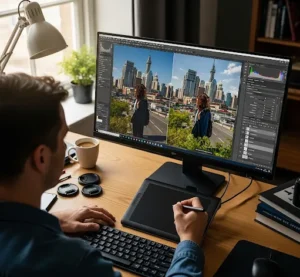 Fixing complex backgrounds and details is a skill that can greatly improve the quality of your photos. With the right photo editing techniques, you can remove distractions, sharpen intricate elements, and make the main subject stand out. This process often involves carefully selecting areas to edit, adjusting layers, and using tools that allow for precise control over small details. Even busy or cluttered backgrounds can be simplified without making the image look unnatural. Learning these skills not only improves the overall look of a photo but also helps maintain its professional appeal.
Fixing complex backgrounds and details is a skill that can greatly improve the quality of your photos. With the right photo editing techniques, you can remove distractions, sharpen intricate elements, and make the main subject stand out. This process often involves carefully selecting areas to edit, adjusting layers, and using tools that allow for precise control over small details. Even busy or cluttered backgrounds can be simplified without making the image look unnatural. Learning these skills not only improves the overall look of a photo but also helps maintain its professional appeal.
Here are a few tips that can help to work effectively:
- Zoom in on fine details to make accurate adjustments.
- Use layer masks to edit without damaging the original image.
- Keep the lighting and shadows consistent when removing or changing objects.
- Pay attention to textures, especially in hair, fabric, or natural elements.
- Take breaks and step back from the photo to see the overall effect before finalizing edits.
Correcting Color Accuracy using Photo Editing Skills
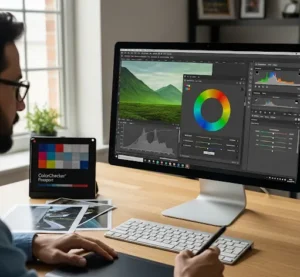 Correcting color accuracy is an important part of photo editing. Colors in a photo can sometimes look different from real life because of lighting, camera settings, or the environment. With photo editing skills, you can adjust these colors so they look natural and balanced. This process involves tweaking brightness, contrast, and color tones to match the true appearance of the subject. Accurate colors make the photo more appealing and professional, especially for products, portraits, or commercial use.
Correcting color accuracy is an important part of photo editing. Colors in a photo can sometimes look different from real life because of lighting, camera settings, or the environment. With photo editing skills, you can adjust these colors so they look natural and balanced. This process involves tweaking brightness, contrast, and color tones to match the true appearance of the subject. Accurate colors make the photo more appealing and professional, especially for products, portraits, or commercial use.
Here are some simple tips to improve color accuracy:
- Use reference images or a color checker to compare colors.
- Adjust white balance to remove unwanted color casts.
- Fine-tune saturation and vibrancy without overdoing it.
- Correct individual color channels if certain tones look off.
- Always view your photo on a well-calibrated screen for the best results.
Improving Skin Tones and Textures with Photo Editing Skills
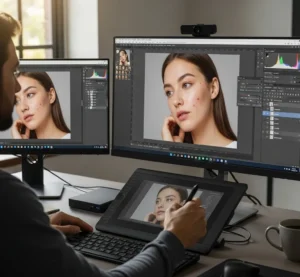 Improving skin tones and textures is an important skill for creating natural-looking portraits. With photo editing, you can smooth out uneven skin, reduce blemishes, and bring out healthy, realistic tones without making the skin look artificial. This process usually involves small adjustments to brightness, contrast, and color balance, along with careful use of retouching tools. Good skin editing preserves the texture so the result still looks authentic and professional. Learning these skills helps make portraits more polished while keeping the subject’s unique features intact.
Improving skin tones and textures is an important skill for creating natural-looking portraits. With photo editing, you can smooth out uneven skin, reduce blemishes, and bring out healthy, realistic tones without making the skin look artificial. This process usually involves small adjustments to brightness, contrast, and color balance, along with careful use of retouching tools. Good skin editing preserves the texture so the result still looks authentic and professional. Learning these skills helps make portraits more polished while keeping the subject’s unique features intact.
Here are a few tips to improve skin tones and textures:
- Use soft brushes and low-opacity tools to avoid over-editing.
- Work in layers to make reversible changes.
- Adjust color balance to match natural skin undertones.
- Retouch small blemishes rather than applying heavy smoothing.
- Regularly zoom out to check the overall effect on the portrait.
Adjusting Lighting and Shadows with Photo Editing Skills
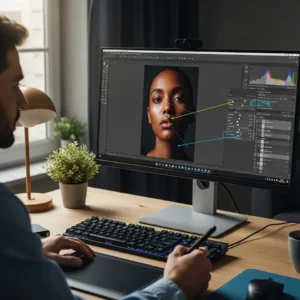 Adjusting lighting and shadows is key to making a photo look balanced and professional. Uneven lighting or harsh shadows can distract from the main subject, while proper adjustments bring depth and focus to the image. With photo editing skills, you can brighten dark areas, tone down overly light spots, and create a natural flow of light across the photo. This helps the subject stand out while keeping the overall image visually pleasing. Learning to control light and shadow through editing also allows you to fix photos taken in less-than-ideal conditions without losing quality.
Adjusting lighting and shadows is key to making a photo look balanced and professional. Uneven lighting or harsh shadows can distract from the main subject, while proper adjustments bring depth and focus to the image. With photo editing skills, you can brighten dark areas, tone down overly light spots, and create a natural flow of light across the photo. This helps the subject stand out while keeping the overall image visually pleasing. Learning to control light and shadow through editing also allows you to fix photos taken in less-than-ideal conditions without losing quality.
Here are some tips for working with lighting and shadows:
- Use dodge and burn tools to lighten or darken specific areas.
- Adjust exposure and contrast to achieve balanced brightness.
- Pay attention to natural light direction to maintain realism.
- Work with layers to make flexible and reversible edits.
- Avoid over-editing, which can make the image look artificial.
Removing Objects Seamlessly with Photo Editing Skills
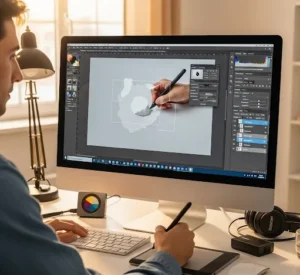 Removing objects from a photo is a common task in photo editing, especially when unwanted elements distract from the main subject. With the right skills, you can erase objects seamlessly, making the background look natural and untouched. This usually involves selecting the object carefully, using tools like the clone stamp or healing brush, and blending the surrounding areas. Practicing this skill is valuable for product photography, portraits, real estate photos, and any image where a clean composition matters.
Removing objects from a photo is a common task in photo editing, especially when unwanted elements distract from the main subject. With the right skills, you can erase objects seamlessly, making the background look natural and untouched. This usually involves selecting the object carefully, using tools like the clone stamp or healing brush, and blending the surrounding areas. Practicing this skill is valuable for product photography, portraits, real estate photos, and any image where a clean composition matters.
Here are some tips for removing objects effectively:
- Zoom in to make precise selections and avoid cutting into important details.
- Work in layers so you can undo or refine changes easily.
- Match textures and lighting when filling in the removed area.
- Take breaks and check your work at different zoom levels.
- Use multiple tools together, like clone stamp and healing brush, for better results.
Consistency Across Multiple Images
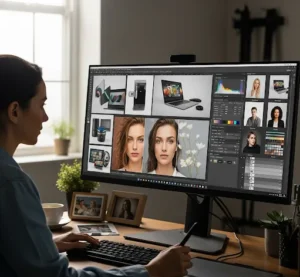 Maintaining consistency across multiple images is one of the bigger challenges in photo editing. When working on a series of photos like product shots, portraits, or real estate images; it’s important that colors, lighting, and overall style look uniform. Inconsistent edits can make a set of photos look unprofessional or mismatched. Using photo editing skills, you can apply similar adjustments across images to create a cohesive look. This not only improves the visual appeal but also strengthens branding and professionalism.
Maintaining consistency across multiple images is one of the bigger challenges in photo editing. When working on a series of photos like product shots, portraits, or real estate images; it’s important that colors, lighting, and overall style look uniform. Inconsistent edits can make a set of photos look unprofessional or mismatched. Using photo editing skills, you can apply similar adjustments across images to create a cohesive look. This not only improves the visual appeal but also strengthens branding and professionalism.
Here are some tips to keep your edits consistent:
- Create and use presets or adjustment templates for repeated edits.
- Compare images side by side to make sure that color and lighting match.
- Keep a reference image to guide your edits for the rest of the set.
- Apply the same sharpening, contrast, and saturation settings carefully.
- Review the entire batch before finalizing to catch any inconsistencies.
AI may Distort Shapes or Proportions
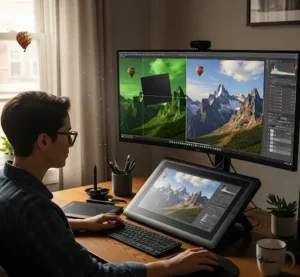 AI can be a powerful tool in photo editing, but it sometimes changes shapes or proportions in unintended ways. This can happen when AI automatically removes objects, improves features, or fills in areas, and the result may look unnatural. Being aware of these changes is important, especially for portraits, product photos, or architectural images where accuracy matters. Skilled photo editing can fix or adjust these distortions to maintain realism while still benefiting from AI tools. Understanding the limitations of AI helps editors balance speed and precision in their work.
AI can be a powerful tool in photo editing, but it sometimes changes shapes or proportions in unintended ways. This can happen when AI automatically removes objects, improves features, or fills in areas, and the result may look unnatural. Being aware of these changes is important, especially for portraits, product photos, or architectural images where accuracy matters. Skilled photo editing can fix or adjust these distortions to maintain realism while still benefiting from AI tools. Understanding the limitations of AI helps editors balance speed and precision in their work.
Here are some tips to handle AI distortions:
- Always check AI-edited areas closely for unnatural shapes or stretching.
- Use manual adjustments or retouching tools to correct distortions.
- Compare the edited photo with the original for reference.
- Be cautious when using AI for complex objects or human subjects.
- Combine AI tools with traditional editing techniques for the best results.
Fine Artistic Effects Require manual Control
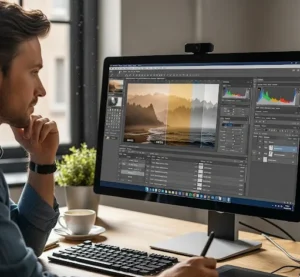 Adding fine artistic effects can greatly improve the mood or style of a photo, but it often requires careful manual control. Automatic filters or AI effects may look dramatic, but they can easily overpower the image or make it look artificial. By manually adjusting effects like color tones, lighting, or textures, you can create a refined and natural result. This approach allows you to highlight certain areas, improve the atmosphere, and keep the image balanced. Learning to control these effects manually to make sure that your creative choices match your vision.
Adding fine artistic effects can greatly improve the mood or style of a photo, but it often requires careful manual control. Automatic filters or AI effects may look dramatic, but they can easily overpower the image or make it look artificial. By manually adjusting effects like color tones, lighting, or textures, you can create a refined and natural result. This approach allows you to highlight certain areas, improve the atmosphere, and keep the image balanced. Learning to control these effects manually to make sure that your creative choices match your vision.
Here are some tips for working with fine artistic effects:
- Apply effects gradually to avoid overdoing them.
- Use layers to adjust and fine-tune each effect separately.
- Focus on improving the subject without distracting from it.
- Compare before and after to assure the changes look natural.
- Combine multiple small adjustments rather than one strong effect for better control.
Handling Reflections and Transparency
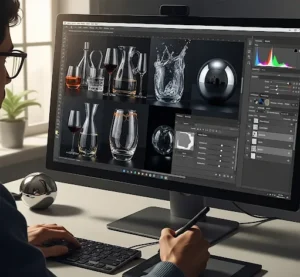 Handling reflections and transparency can be one of the more challenging aspects of photo editing. Reflections on glass, water, or shiny surfaces can distract from the main subject or create unwanted effects. Transparent objects, like glassware or liquids, require careful adjustments to maintain their natural look without losing details. Strong photo editing skills allow you to manage these elements while keeping the image realistic and visually appealing. This is especially important in product photography, interior shots, or any image where clarity and accuracy matter.
Handling reflections and transparency can be one of the more challenging aspects of photo editing. Reflections on glass, water, or shiny surfaces can distract from the main subject or create unwanted effects. Transparent objects, like glassware or liquids, require careful adjustments to maintain their natural look without losing details. Strong photo editing skills allow you to manage these elements while keeping the image realistic and visually appealing. This is especially important in product photography, interior shots, or any image where clarity and accuracy matter.
Here are some tips for handling reflections and transparency:
- Use layer masks to edit specific areas without affecting the rest of the image.
- Adjust opacity and blending settings to make transparent objects look natural.
- Pay attention to lighting and shadows to maintain realism.
- Zoom in to carefully manage fine details and edges.
- Always compare the edited photo with the original to have a natural result.
Personal Style and Creativity
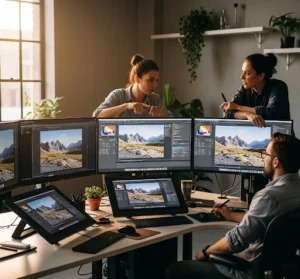 Personal style and creativity in photo editing cannot be fully achieved by AI or automatic tools alone. While AI can speed up tasks, it often lacks the small judgment needed to create a unique look or mood. Human guidance make sure that colors, lighting, and effects align with the desired style and message. Editors can make creative decisions that reflect personal taste, brand identity, or artistic vision, which AI cannot fully replicate. Developing your own style also helps your work stand out and gives your photos a professional, consistent feel.
Personal style and creativity in photo editing cannot be fully achieved by AI or automatic tools alone. While AI can speed up tasks, it often lacks the small judgment needed to create a unique look or mood. Human guidance make sure that colors, lighting, and effects align with the desired style and message. Editors can make creative decisions that reflect personal taste, brand identity, or artistic vision, which AI cannot fully replicate. Developing your own style also helps your work stand out and gives your photos a professional, consistent feel.
Here are some tips for combining human creativity with editing tools:
- Use AI tools for basic corrections, but make final adjustments manually.
- Experiment with colors, contrast, and effects to find your unique style.
- Study different editing styles for inspiration but adapt them to your vision.
- Keep a reference guide or mood board to maintain consistency.
- Take time to review and refine edits to assure they match your creative intent.
Conclusion
AI tools can make photo editing faster, but they cannot replace the skill, judgment, and creativity of a human editor. From fixing complex backgrounds to handling reflections and fine artistic effects, there are many situations where manual adjustments are needed to make images truly professional. Developing strong photo editing skills gives you control over every detail and makes your work stands out. Which of these AI limitations have you noticed in your own photos? Do you prefer using AI for speed or manual edits for precision? Share your experiences and tips in the comments below, we’d love to hear how you balance AI tools with your editing skills.
Read Next: Top 10 Insights on Balancing AI Efficiency and Human Creativity
